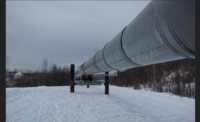New transportation safety guidance available to oil industry

Driving-related incidents are the single largest operational cause of fatalities in the oil and gas industry – a circumstance which has prompted the International Organization of Gas Producers (IOGP) to develop guidance about transportation safety.
The new report, 365-5, is the latest work from the Association’s Safety Committee on driving-related incidents and is intended to help companies become safer by updating advice on scoping, categorizing and calculating data related to vehicle crashes.
For the report, a crash is defined as a ‘work-related vehicle damage, personal injury or fatality due to a vehicle-related event, e.g. collision or rollover.
Four categories of crashes
The guidance notes go on to suggest how companies can classify crashes in four main categories of event:
· catastrophic, which results one or more fatalities
· major, which results in any injury serious enough to a cause a lost work day or involves a vehicle rollover
·serious, which results in an injury deemed to be recordable and/or a restricted work day
· others, which results in minor injury, disabling damage to the vehicle or any other incident that does not fall into the categories of catastrophic, major or serious
Calculating frequencies
The section on motor vehicle rate calculations encourages companies to collect distances –preferably in kilometres – driven by motor vehicles on company business. This includes company, contractor or subcontractor vehicles. With those figures available, companies can calculate their motor vehicle crash frequencies for each of the defined categories.
A key recommendation is that all companies involved in land transportation – whether operators or contractors – have a management system based on ‘a full assessment of the risks as well as control measures to address such risks.’
A separate land transportation safety glossary is now available as well. This document covers land transport-specific terms from ‘bus’ to ‘upfitting’. For example, it defines ‘safe driving’ as ‘the use of proactive safe behaviours, risk assessment and management skills to prevent the loss of control of a motor vehicle.’
Copies of the land transportation guidance notes and the glossary are available here.
Looking for a reprint of this article?
From high-res PDFs to custom plaques, order your copy today!




